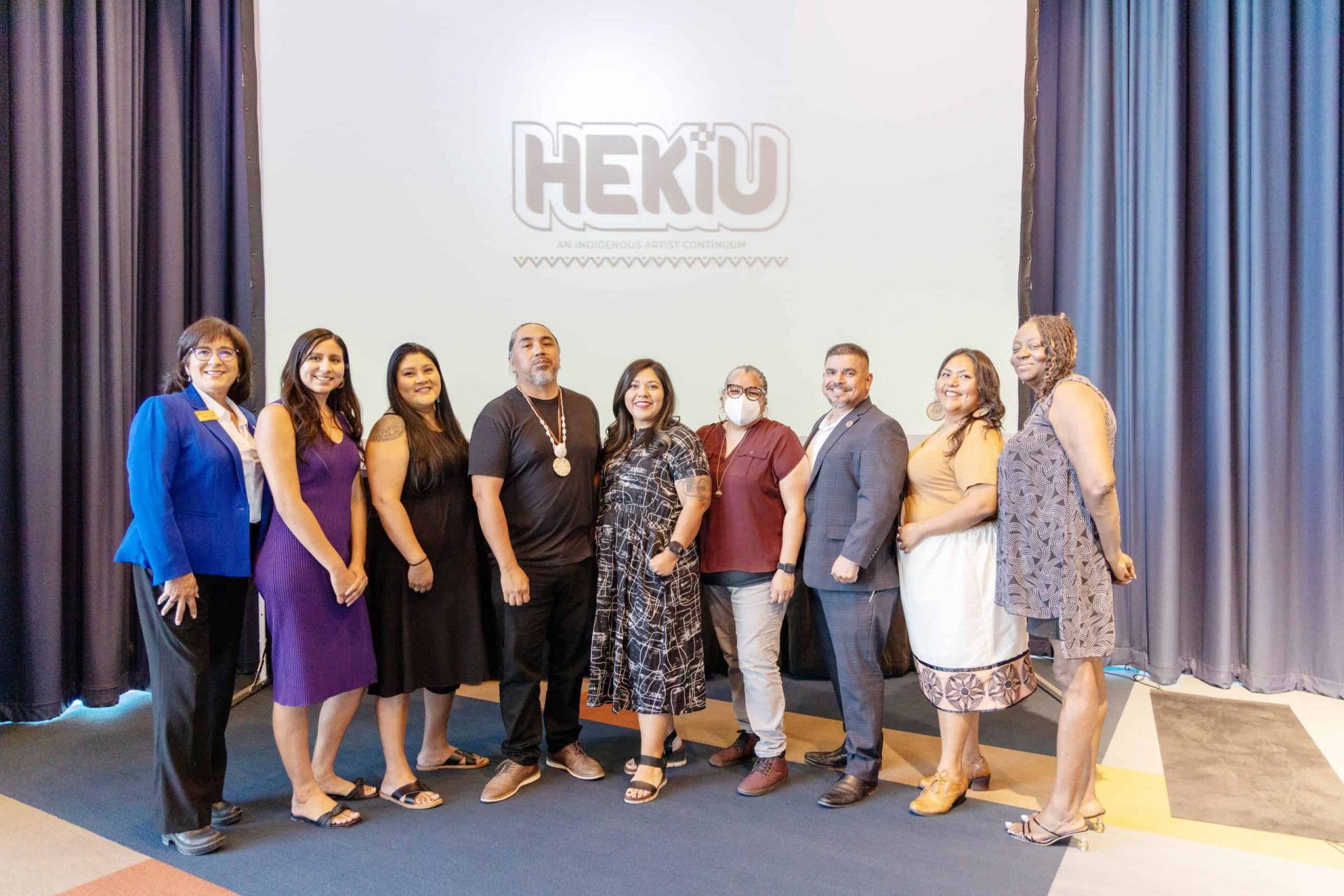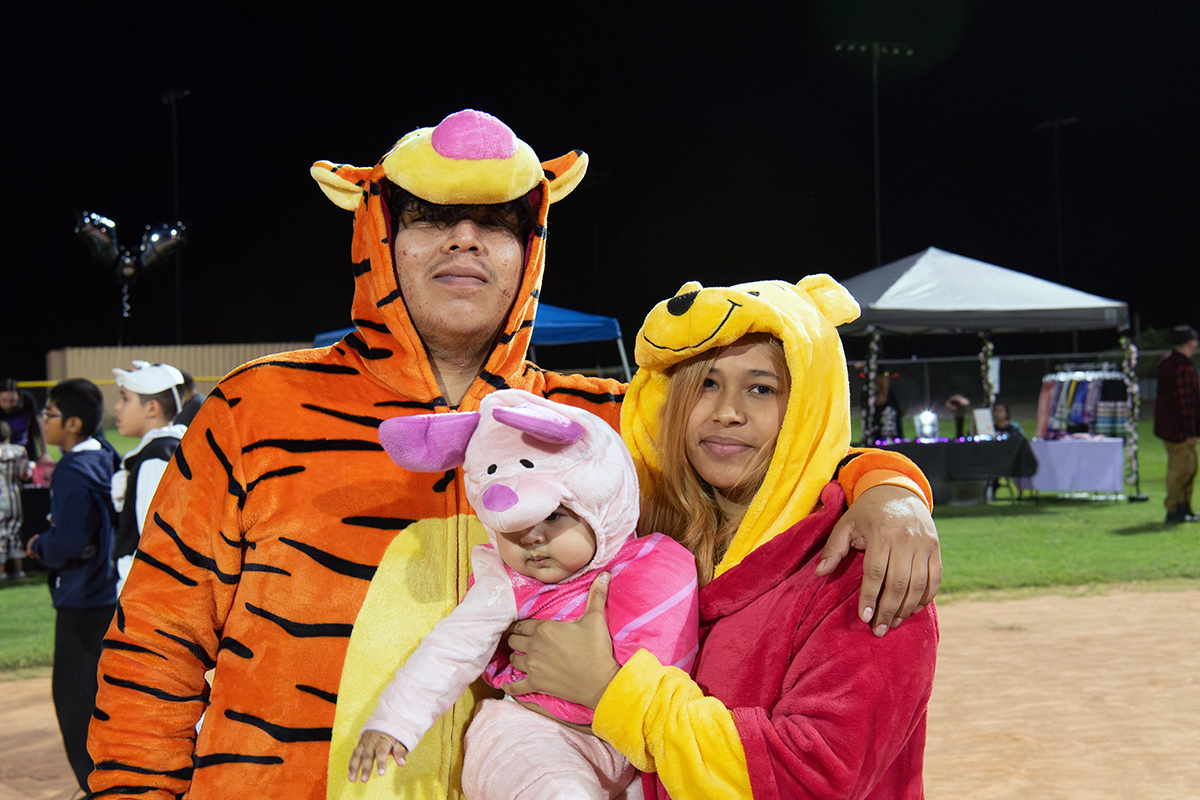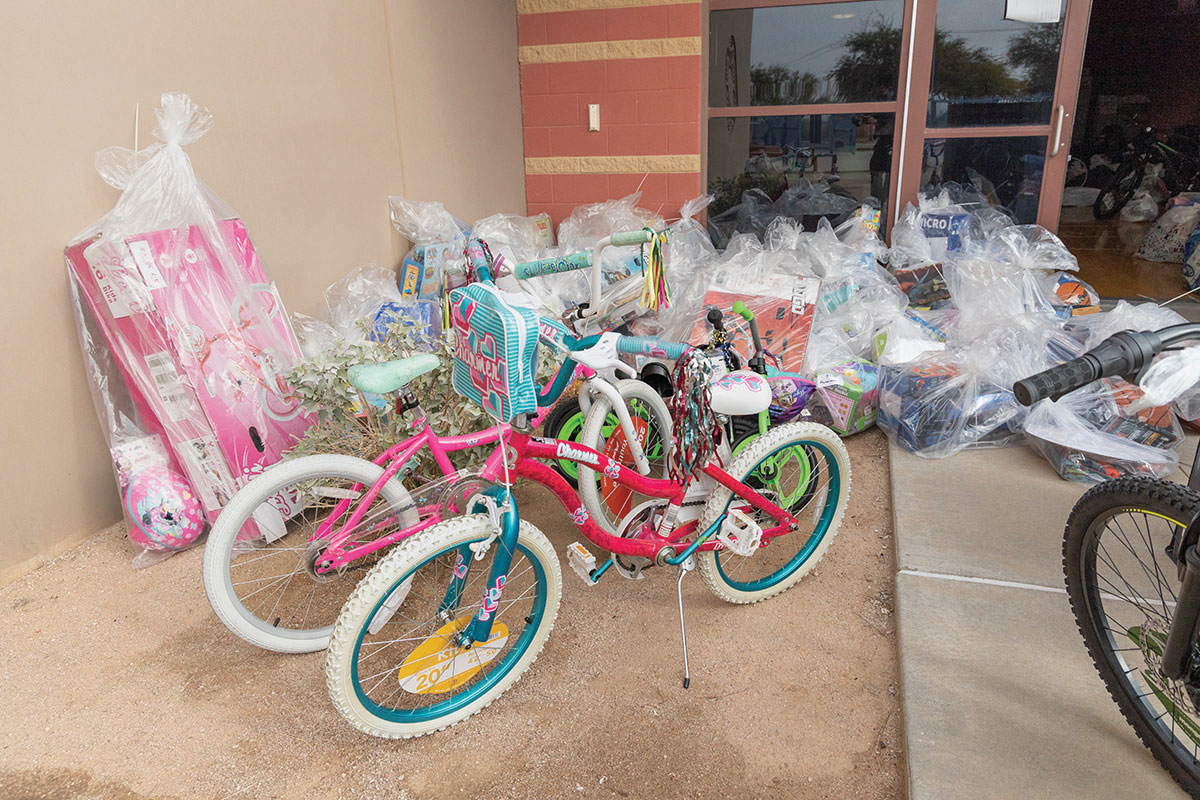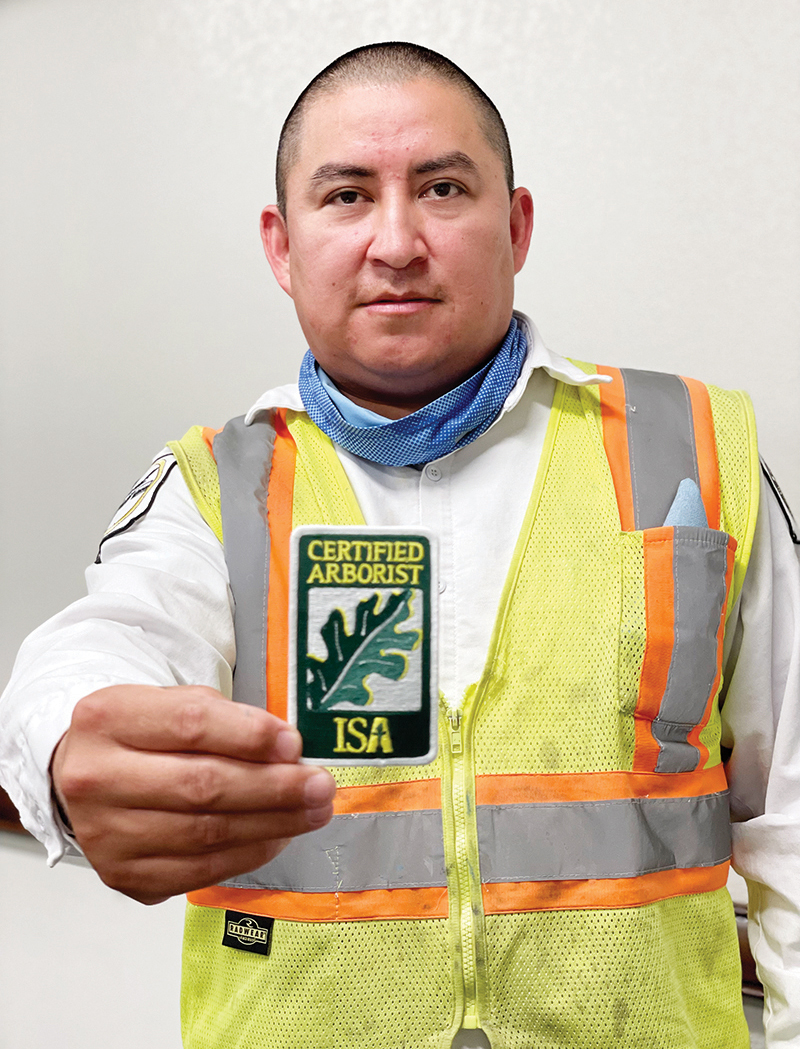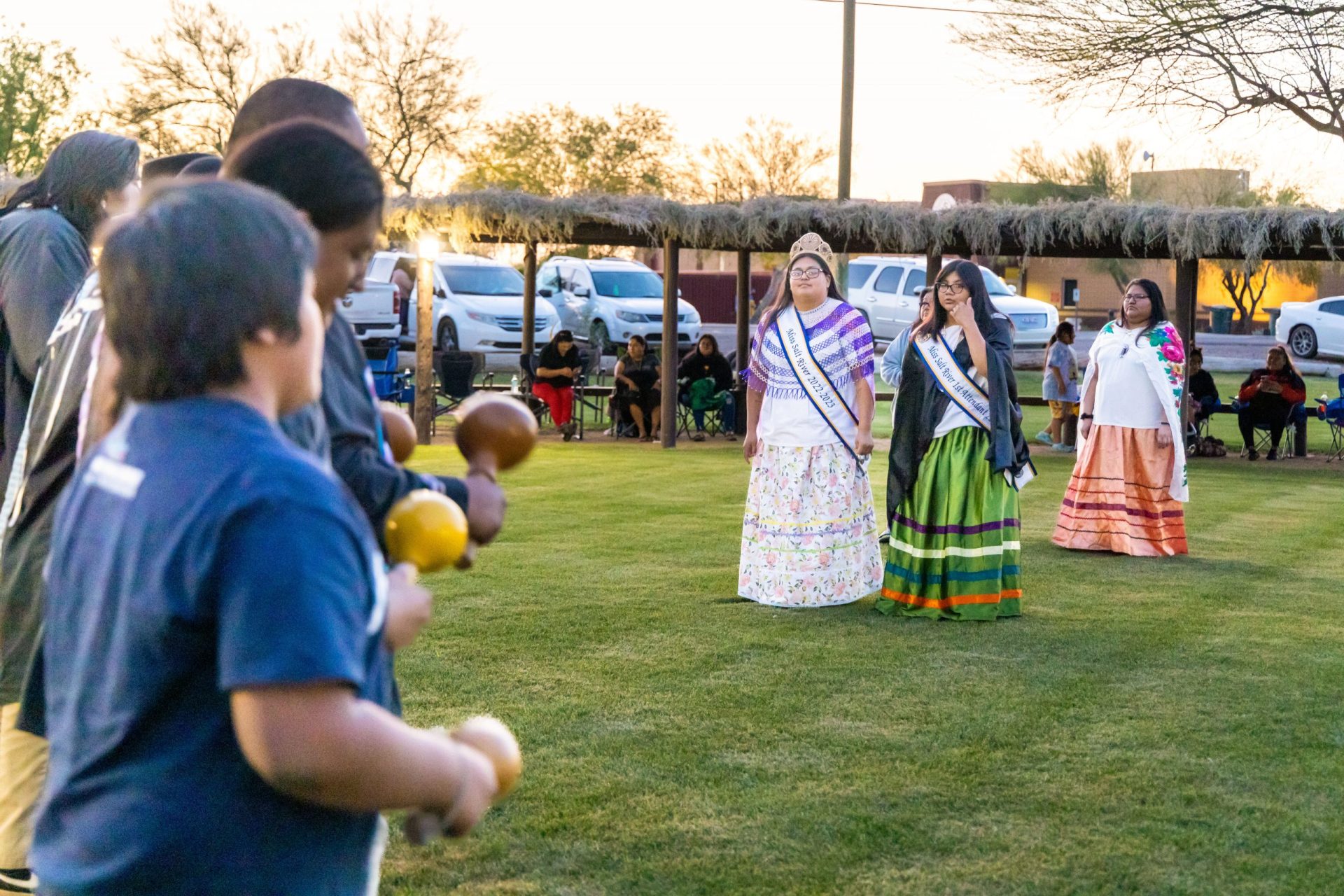VIEWS: 1902
November 9, 2023Hekiu Indigenous Artist Continuum Launches, Provides Cultural Consultation for Projects
In July 2021, a group of local Indigenous artists was asked to be part of applying for a new grant in collaboration with the ASU Indigenous Design Collaborative and the City of Tempe.
The grant was the two-year “Our Town” grant offered by the National Endowment for the Arts, which provided the group funding to collaboratively produce their own set of design principles inspired by the City of Auckland, New Zealand’s Te Aranga Design Principles, a set of outcome-based principles founded on intrinsic Māori cultural values and designed to provide practical guidance for enhancing outcomes for the design environment.
Photographer and multimedia designer Amy Davila (Akimel O’odham) of the Gila River Indian Community was one of the artists, along with painter and muralist Thomas “Breeze” Marcus (Tohono O’odham) and architectural designer Selena Martinez (Yoeme), who invited a list of other artists to represent their communities.
The three tribes included in the grant were O’odham, Piipaash and Yoeme, who all have a connection to the land throughout the Valley.
“We wanted to initiate a similar concept for the City of Tempe, to ‘O’odhamize’ the city of Tempe, and [explain] why it was necessary and beneficial [for everyone involved],” said Davila.
With the grant approved, Hekiu: An Indigenous Artist Continuum, was established. Hekiu means “past” in O’odham.
Hekiu’s purpose is to create accessibility for O’odham, Piipaash, Yoeme and other Indigenous creatives to gather and connect through creative and artistic opportunities. The group has other intentions to advise, consult and provide resources for projects of various scales, and to connect with and create partnerships with tribal entities and surrounding municipalities.
“[With Hekiu] we take into consideration when creating art in our environment the natural resources available, what’s relevant culturally speaking, and what we feel that we can stand behind that we can express culturally,” said Davila. “If there is something someone is interested in creatively, is it culturally appropriate? The seasons, the times of the year?”
On October 5, Hekiu was officially launched with a reception at the Tempe Center for the Arts, where the group introduced their team and what Hekiu is about.
Davila said that the reception marked the official completion of the grant, and now Hekiu is available for consultation for multiple purposes.
“We got a lot of good feedback about the launch,” said Davila. “We were kind of expecting around 50 to 75 people, but the room was packed.”
Amy Juan from the San Xavier Co-Op Farm was the host for the event, which was especially relevant because one of Hekiu’s principles is recognizing the pathways to food.
Some of the topics discussed during the launch were the awareness of the longevity of O’odham and Piipaash existence and presence in the territory as a distinct legacy, honoring and protecting culturally significant sites, restoring and enhancing the surrounding natural ecosystems, and prioritizing the creative expression of O’odham and Piipaash narratives.
Salt River Pima-Maricopa Indian Community member-owned Ernie’s Catering provided food for the event, which was paid for by the City of Tempe.

